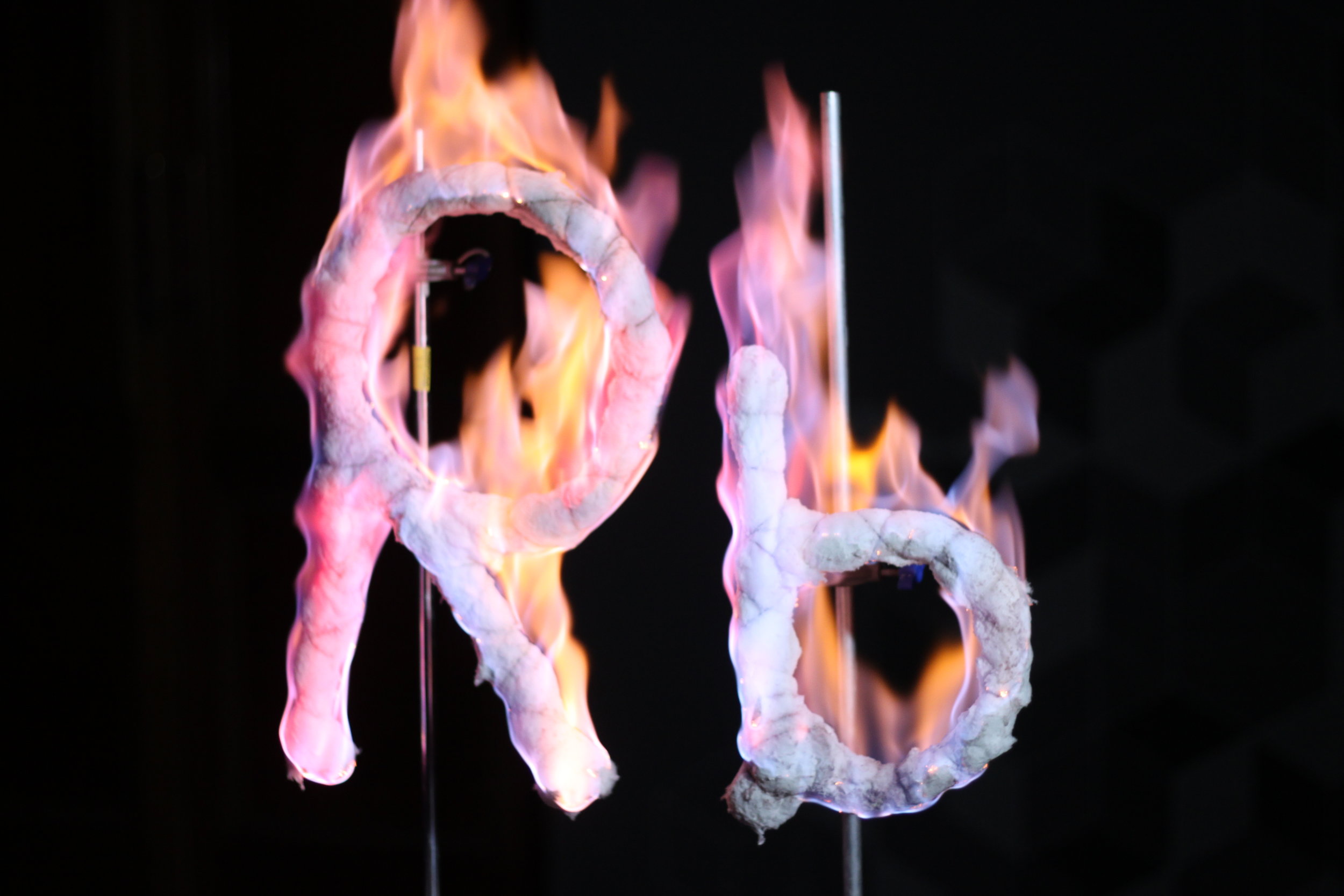Flame Tests with Group 1 Alkali Metals

I recently shot a short series of flame test films demonstrating the different coloured flames produced when burning group 1 alkali metals. The films were shot at the Royal Institution and produced for the Royal Society of Chemistry's Learn Chemistry site.
Here's what happens when you burn Caesium salts:
http://youtu.be/nm8nyGXLZG4
Metal salts were disolved into a methanol solution (the fuel) and this was soaked into the wireframe structures of the element symbols (Rb = Rubidium, Cs = Caesium etc.) - these were then lit to produce some really beautiful flame colours, ranging from red (Lithium) to blue (Caesium). Each element has its own unique colour or spectrum - almost like a signature colour which is directly related to its chemical properties.
Rubidium has a sort of red-violet colour:
http://youtu.be/JSUhzcVnuOg
By burning the metal ions, we're exciting electrons causing them to move into higher energy states. These are fairly unstable states to be in so the electrons eventually move back down into lower energy states and as they do this they emit light. The wavelength and resulting spectra of light given off during this process are specific to each element (giving a range of pretty colours!) and can be used to identify different metals from one another. If you have a spectroscope (an instrument that essentially lets you look at the make-up of light) you can see the individual spectra given off by the flames.
The RSC has published some learning materials around these videos which will give you a much clearer idea of the chemistry at hand if you're interested.
Aside from shooting pretty flames, these films also gave me opportunity to play about with titles and compositing - using the flame footage as flickering colour fills for the Element names.
http://youtu.be/HCa0sWvQr94
I really like this effect and hope to experiment with it further in future films.
The flame test demonstrations were originally featured in the 2012 Christmas Lectures - which you can view here (around 30 mins in).
